Toyota’s new Prius Plug-in Hybrid is now in Europe, and the car world’s biggest promoter of hybrids has released detailed info and a large set of images to mark the occasion. Another step in Toyota’s goal of reducing whole fleet CO2 emissions by 90% by 2050 through hybrids, plug-in hybrids, EVs and fuel cell vehicles; the Prius Plug-in Hybrid (PHV, Prius Prime in the US) boasts plenty of new tech and double the EV range.
Toyota says that the increase in EV driving range from 25 km in the original Prius PHV to over 50 km is based on tech improvements in three key areas: optimum battery development, maximising EV driving performance and making the overall vehicle package more efficient. Let’s dive into the tech.
Located under the rear load space is a lithium-ion battery with a capacity that has been doubled from 4.4 to 8.8 kWh. However, the battery volume has only increased by 66% – from 87 to 145 litres – and at 120 kg, it is only 50% heavier than the old battery.
EV power has also been increased by some 83% thanks to a Dual Motor Drive System. A new, compact one-way gear within the transaxle allows the hybrid system generator to act as a second electric motor. This boosts EV power for better acceleration and a maximum EV driving speed of 135 km/h, while greatly reducing engine start up frequency, Toyota claims.
With a total power output of 90 kW (121 hp), the new Prius PHV accelerates from 0-100 km/h in 11.1 seconds, and on to a top speed of 162 km/h. It achieves average fuel consumption of only 1.0 litre per 100 km and CO2 emissions of just 22 g/km.
Another key factor that minimises engine usage in EV mode is the world’s first gas-injection heat pump that powers the AC. It will heat the cabin in outside temperatures as low as -10 degrees without starting the engine. More efficient than engine heating or high power electric heaters, Toyota says that the pump can efficiently warm the interior using heat absorbed from outside air. Mounted to the heat pump system, the gas-injection mechanism ensures heating performance even when outside temperatures are low.
In addition, during charging, a new battery warming system will warm the cells to an efficient working temperature in outside conditions as cold as -20 degrees. This minimises the impact of cold weather on EV driving range, with full power available from start off in even very cold conditions, it is claimed.
Speaking of charging, the maximum charging power has been increased from 2 to 3.3 kW, and the battery itself can be fully charged up to 65% more quickly; in only two hours using the Type II Mode III Mennekes connector, and three hours and ten minutes using a standard household plug socket. The charging process is now programmable weekly on a day-by-day basis, and includes the facility to simultaneously charge and pre-cool/heat the cabin.
A choice of four switchable powertrain modes is available to control how the E-CVT transmission delivers power: HV Mode, EV Mode, EV City and a new Battery Charge Mode.
HV Mode efficiently combines the power delivery of the engine and electric motors, allowing the Prius to operate as a regular hybrid. EV Mode uses electric power from the battery to drive the vehicle, only starting the engine when the throttle is wide open or at high vehicle speeds. It incorporates EV City Mode, which reduces max power output and only starts the engine when the throttle kick-down is engaged.
Activated by pressing and holding the HV/EV Mode switch, Battery Charge Mode uses the engine to generate electricity to charge the battery while driving in HV Mode. In addition, available in any of the three modes, three ‘on-demand’ Drive Modes (Normal, Power and Eco) can be selected.
The Power mode modifies the response of the Prius to throttle inputs, boosting power to improve acceleration and enhance driving pleasure. In this mode, a new DMD (Driver’s Mind D Logic) drive assist system comes on. Using a Driver’s Monitoring Index (DMI) system, which continuously monitors the vehicle’s G-forces to understand driver behaviour and habits, DMD responds to the driver’s desire for more sporty performance, adjusting engine braking performance and throttle response accordingly.
There’s one very cool feature that adds to efficiency, the solar roof. The successful development of technology first revealed on the Auris HSD concept in 2010, the Prius PHV’s roof incorporates a large solar panel which generates electricity to charge the hybrid battery.
When the vehicle is parked (but not plugged in to a charging socket), the solar roof charges an intermediate solar battery which, when fully charged, delivers a pumping charge to the main battery. During driving, the solar system charges the 12 volt auxiliary battery, compensating for auxiliary load and thereby reducing the energy consumption of the main HV battery. This potentially contributes to a 2-3% increase in hybrid system efficiency, Toyota says.
Depending on weather conditions, solar charging can increase the EV driving range of the Prius PHV by up to five km per day, equating to some 1,000 km of all-electric driving per annum!
Like the standard Prius hybrid, the PHV is based on the Toyota New Global Architecture (TNGA) platform for a lower centre of gravity, a more engaging driving position (Toyota’s words) and more precise and responsive handling, with less body roll. The latter is also helped by a larger front stabiliser bar.
The body is 60% more rigid thanks to the increased use of high-strength steels and structural adhesives, a stiffer connection between the cowl panel and front pillars, additional reinforcement to the centre pillar lower structure and the panel connection, three-way inner rear floor cross-member reinforcement, and the use of continuous flanges to increase the strength of joints between various structural elements.
The result is better handling without having to use firmer suspension settings. The result, according to Toyota, is superior, direct and responsive handling and dynamics beyond what might be expected of an eco-car. This model gets PHV-specific suspension settings.
Toyota claims that the plug-in is quieter the standard Prius. PHV-specific NVH-reducing measures include bonnet side seals to reduce engine noise under acceleration, urethane fender separators to reduce engine compartment noise entering the cabin, acoustic front door glass for a quieter front seat area, and the addition of rear wheel housing inner silencers for a quieter rear seat area.
Cabin comfort and quietness has been even further enhanced through the adoption of a urethane-based headliner and enlarged floor silencer, and high sound absorbing materials to the A pillar, deck side and back door trim.
Like the non-plug-in Prius, this car is pretty recognisable. Styling differences include a 3D acrylic grille treatment and thin and compact 4-LED headlamp units featuring new adaptive tech. There’s also an active shutter built into the lower front grille. In profile, the PHV be identified not only by its longer rear overhang, lower cowl and rear spoiler heights, but also by PHV-specific two-tone 15-inch rims designed for better brake cooling.
More PHV clues at the back, including the aero-enhancing ‘double-bubble’ rear screen that’s carried into the curve of the rear spoiler, at the extremities of which are integrated rear LED light clusters, again unique to the PHV. Cd 0.25 drag coefficient. Seven colours are available, including the PHV-exclusive Spirited Aqua metallic seen here.
Inside, it’s as per the fourth-gen Prius, but there’s a large eight-inch infotainment screen with updated graphics. The dual 4.2-inch TFT driver’s meters also feature PHV-specific graphics. The PHV’s instrument panel gets satin chrome-plated ornamentation. The luggage deck has been raised by 160 mm to accommodate the larger plug-in hybrid system battery, with maximum loadspace volume now at 360 litres.
A CFRP (Carbon Fibre Reinforced Plastic) tailgate – a world first for mass production vehicles – is employed to reduce weight. Of course, the enhanced Toyota Safety Sense system incorporating Pre-Collision Safety with pedestrian recognition, and full-speed Adaptive Cruise Control is included in this green car, of which there are 150 images after the jump.
Looking to sell your car? Sell it with Carro.


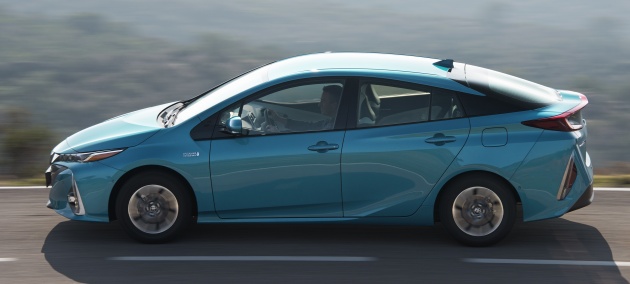
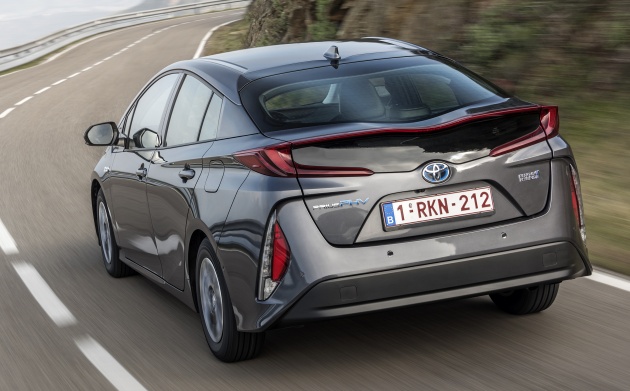


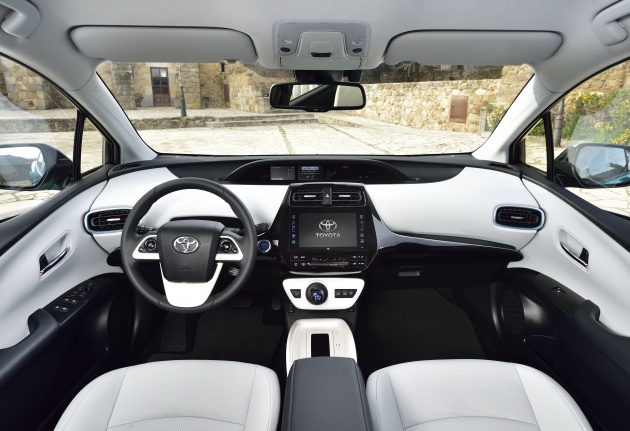






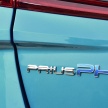
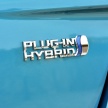
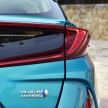

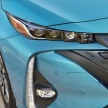
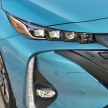
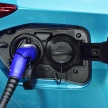
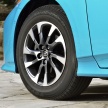
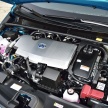
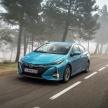
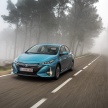
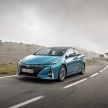
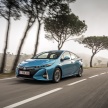
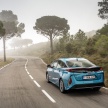

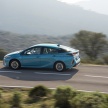
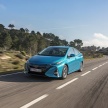
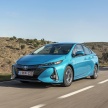
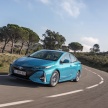
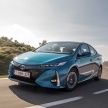
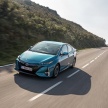
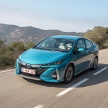
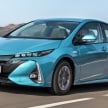
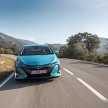
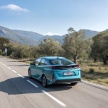
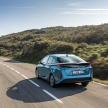
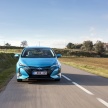
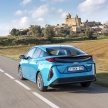
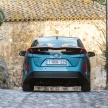
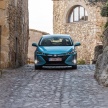
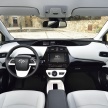
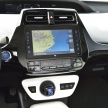
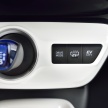
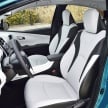
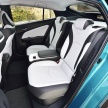
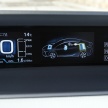
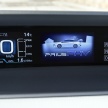
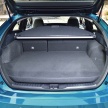
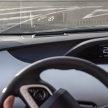
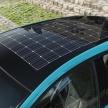
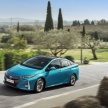
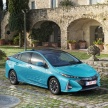
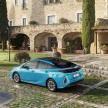
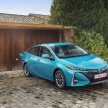
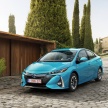
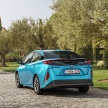
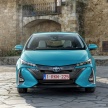
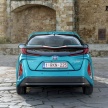
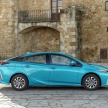
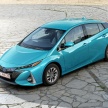

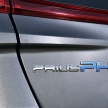
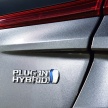
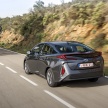

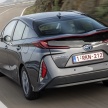
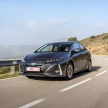
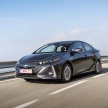
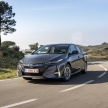
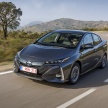
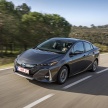
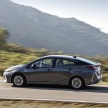
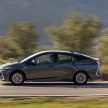
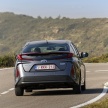
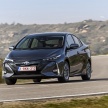
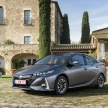
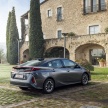
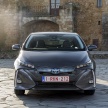
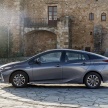
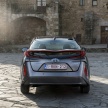
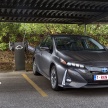
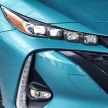
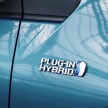
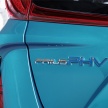
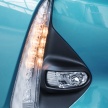
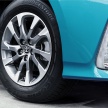
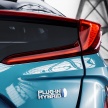
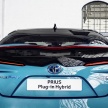
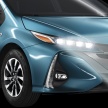
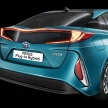
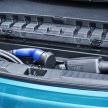

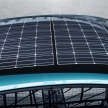
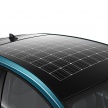
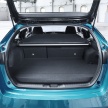
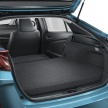
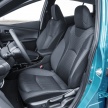
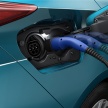
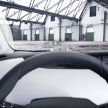
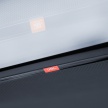
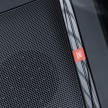
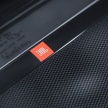
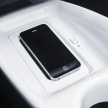
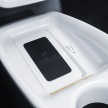
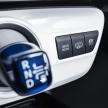
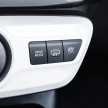
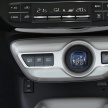
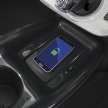
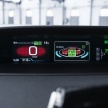
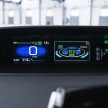
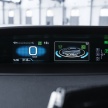
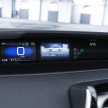
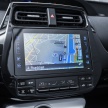
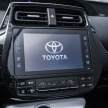
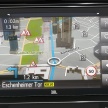
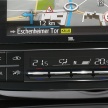

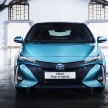
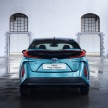
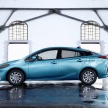
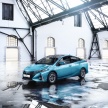
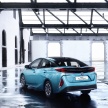
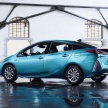

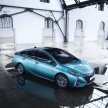
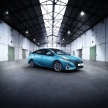
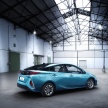
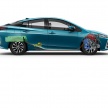
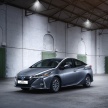
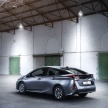
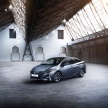
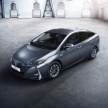
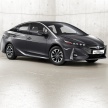
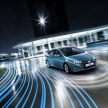
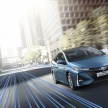
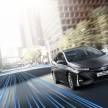

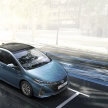
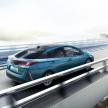
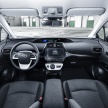
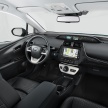
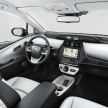
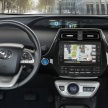
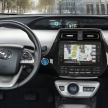
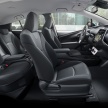
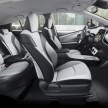
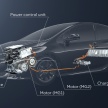
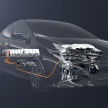
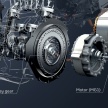
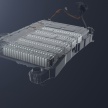
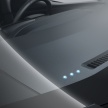
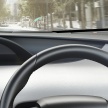
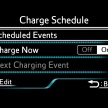
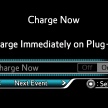
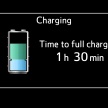
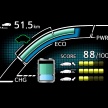
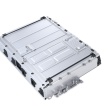
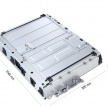
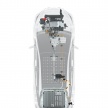




























I wish we had this car here. What happened to our old Prius?
Gomen one day push for hybrid and EV. MAI also come and persuade people to buy Hybrid.
Now, totally abandon the story. Prius now at a silly price of RM250k
Real lalang Government. No focus in life
bro. they focus lah. BUT ONLY IF THEY THINK FOCUS IN LIFE CAN EARN BUCKS. lol
There is blame to share as well. If UMW decides to CKD the Prius, they would be getting the CKD EEV discounts like what other CKD hybrids are getting.
Ur toyota forgot to CKD here. Pls salahkan ur overlord
Why can’t we get these kind of Toyotas on Malaysian roads? Instead we get junks like the Avanzas
Bcos Malaysian dun like new tech on car. Furthermore Malaysian potential buyer will listen opinion from foreman which only knew repair old tech Vios, Altis, Camry.
Mcm copied je…
Copy siapa? P1?
well, they say this vehicle is hideous. I wonder if the designers were inspired by you.
Looks much better then the normal Prius.
No more design inspired by Lady Gaga?
car looks more futuristic than Ioniq.
When plug in version will come to Malaysia ? Petrol price will get worse soon…
Now already worse
nice car. we want!
Solar roof? Perfect for Malaysa’s scorching hot sunny weather. But no…. too expensive and our gomen is not doing anything to make it affordable to the rakyat. Kononnya want to protect the environment…. puiiiiii
Most of Toyota hybrids are boring looking car except the CH200. This new Hybrid Prius may have taken a leave/cue from the good looking Hyundai Ioniq.
May I say it looks futuristic. Bravo & Kudos to Toyota. Am sure john is drooling just looking at it.
Most of Toyota hybrids are boring looking car except the CT200h. This new Hybrid Prius may have taken a leave/cue from the good looking Hyundai Ioniq.
May I say it looks futuristic. Bravo & Kudos to Toyota. Am sure john is drooling just looking at it.
CT200h is so crammed on the inside. More so than the Prius. It’s much smaller than the vios on the inside and I reckon it’s due to EU regulation and so on – crash protection mainly.
very nice design especially the rear of it!
Why would you want cars like these when the Tesla is far more supperior for abit more in Europe.
malaysia..pls gv 0% tax for import hybrid
Alredi got. Pls CKD here
As much as I would like to have this car, The sound of the tech in this car makes me worried about maintenance. Not only the cost of the maintenance would be high but it’ll be tricky to maintain as well. When it comes to electronics, weird things could always happen.
My Hybrid Camry had a minor fender accident that broke the front sensor, the few days before sending it for repairs the hybrid battery starts acting strange where it only shows 2 bars instead of full bars all the time, after repairing it the battery indicator returned to normal but now the USB keeps frying my lightning cable (3 in total so far, MFi certified), UMW doesn’t know why it’s doing that.
With that said though, I would still want the car if UMW officially carries it here. Hybrid cars so far has been my favorite type of drive-train. But I would much prefer the car to be CBU and UMW to have specialized technicians for Hybrid cars. Hopefully gov could introduce the tax exemptions and this can be priced like the old Prius at RM150k. But given where our economy and treasury is going, Pray Pray gov not going to go bankrupt like Greece…
We left our Camry Hybrid there because it’s just such a hassle to drive as compared to our CX-5. The steering is so heavy you could actually develop biceps from it. From what I’ve heard the Camry is more “CBU” that the others as the drivetrain and hybrid systems are imported directly from Japan. But well, I’ve not seen a single Toyota Camry in Japan. They drive mainly Toyota Crowns when it comes to executive saloons, which is apparently equivalent to the ES, and they all come with V6 engines and RWD. Greece has the EU and they are backed by Deutschland and France. Greece is the one better off here. Malaysia facing the same scenario – would be totally disastrous. Look how many people would bail us irrelevant mofos out. The slipping currency really is a deal breaker. You might though it would attract foreign direct investments but we all know how things go, 30% of the share has to be given out for free. Allegedly, undertable money is involved too. So far only the Japanese are willing to comply but not for long. I seriously don’t see a future out of this. But hey, the CEng guy would come here and post facts about the glorious regime soon.
If CKD, there will be NO pre-collision safety installed. We’ll see. Typical UMW.
ALL Pre collision safety is now mandatory on all EU cars, that includes automatic emergency braking, minor things like bracing the passengers for impact – tighten seat belts and make the seats upright. In Malaysia, ESC and 7 airbags are only installed on German makes as standard, maybe on some imported Japanese cars as for CKD, maybe only top of the line. They sell it at a premium and make these basic safety features marketable. It should not be marketable and used as a selling point, it should be standard across all range. So my word of advice is don’t put too much Hope on it.
Just thinking… The plug is next to the fuel tank lid, wouldn’t that hv risk creating spark nearby n lit up the car?